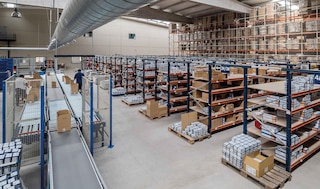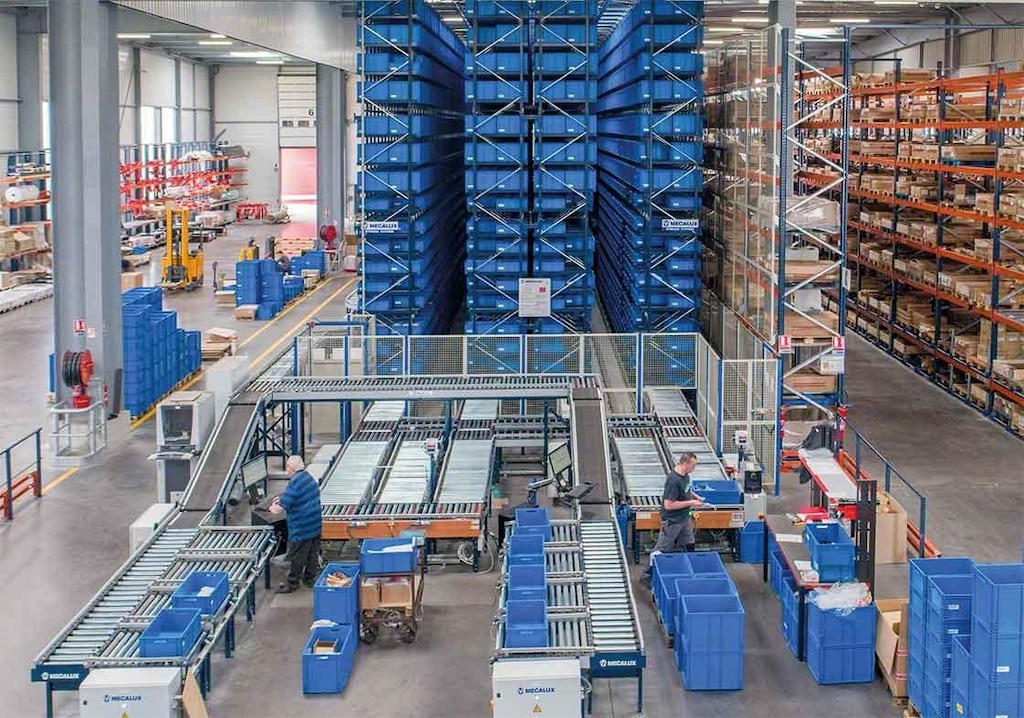
Phase into picking and order prep
Undoubtedly, picking or order prep represents one of the most complex, costly operations for any warehouse. Moreover, changes in consumer habits have led to increased numbers of orders with the added feature that many of these orders contain few units each.
The first step towards optimizing operations linked to each picking phase is to understand these different phases. And, as such, enhance the overall productivity of the warehouse.
Phase 1: Advance planning
Like goods receipts, advance planning of picking tasks enables you to assign the appropriate resources accordingly. The more standardized the unit loads and processes, the smoother the picking will run. For instance, this means you can assign the appropriate handling equipment to each order or order grouping.
How to improve pick planning
The use of warehouse management systems has made this picking phase simpler, as the software itself takes charge of compiling and prioritizing order requests and also regulates the task distribution within the work team.
Phase 2: Routes and movements
Among the pick phases, the one that involves operators' moving around searching for goods is the one that requires the most time and, consequently, the most resources. This is the case when picking is carried out according to the person-to-product method. The routes include:
- From the starting point to the first product's location.
- From the initial product slotting to the next ones.
- The return trip to the operations area to continue with the order conditioning.
How can I save time during pick trips?
The layout plays a key role in gaining speed in this picking phase, as the warehouse must be designed to facilitate routes and clear obstacles. Other important factors are the handling methods, which speed up movements, and the organization of goods picking, which can be improved by a WMS. Another option is to shift to a product-to-person approach and offload the burden of goods transfers onto automated systems.
Phase 3: Collection or extraction of goods
It may seem a trivial matter, but the time spent picking a product will be every different if the product is at ground level or on a low shelf level or, on the other hand, if you need to raise yourself several feet in the air using equipment to reach the load. That said, most errors occur at this stage of picking. So, it is essential to extract your goods accurately and safely.
How to increase efficiency in this pick phase
To make sure this picking phase runs smoothly, it is necessary that:
- The inventory corresponds to what is really on the shelves and there are no mismatches.
- The operator picks the products rigorously if the warehouse operates on a person-to-product method. If operating with a WMS, follow the instructions on the handheld devices to the letter.
- The handling equipment is properly maintained.
- Plus, automated systems such as stacker cranes should be considered if load extraction is carried out very high up. This will make best use of available time and increase safety. In fact, such systems can perform combined cycles, i.e., use the journey towards the rack to deposit a unit load (replenishment) and then collect the specified goods (picking).

Phase 4: Verification and preparation of the order for dispatch
This is the last picking phase and brings together all the tasks involved in conditioning the products picked for dispatch. These comprise:
- Verification of the collected units in terms of quantity and SKU number.
- Order conditioning: weighing, packaging, labelling.
- Transfer of the order to the dispatch zone based on the transport and delivery routes.
- Printing of packing list or delivery notes for carriers.
How can I improve order packing?
Some tips that help make this picking phase more agile include:
- Make packaging uniform and adjust it to the type of products being handled.
- Labelling orders and drawing up packing lists in line with transport agency standards, as made possible by the Mecalux Multi Carrier Shipping Software module.
These are the main picking phases that take place in every warehouse. The big difference between some operations and others are the picking and order preparation methods, which we have already talked about in our blog. Each phase is thus approached in a different sequence and with specific features tailored to the special needs of each warehouse.
